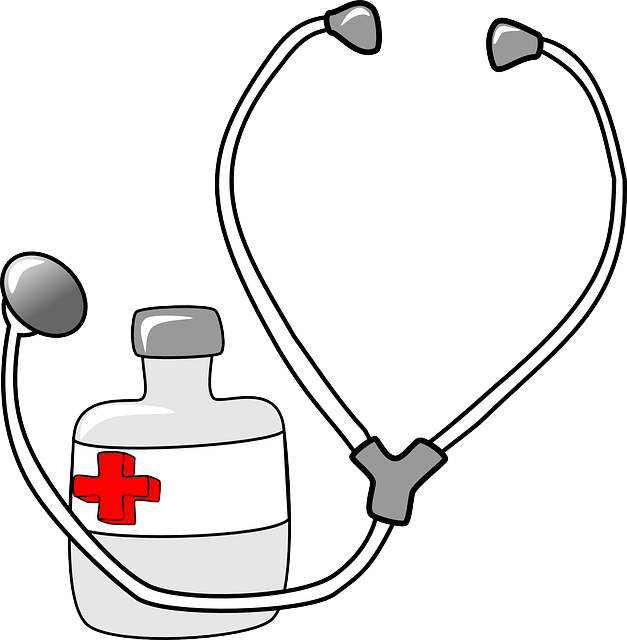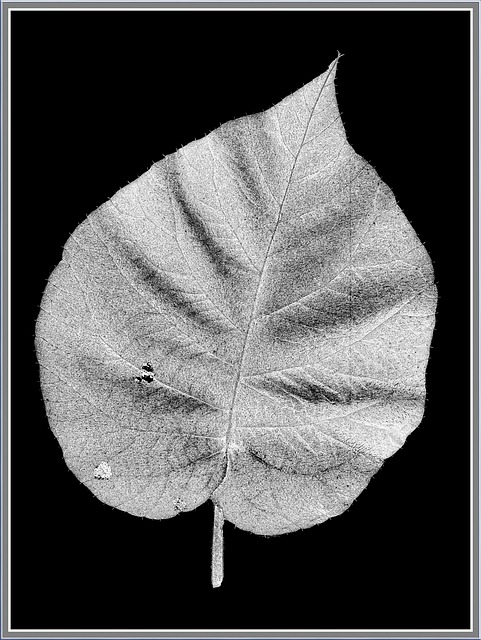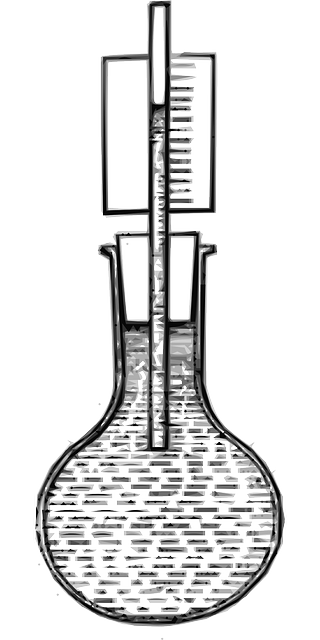تطعيم (طب)
| التطعيم Vaccination | |
|---|---|
| تدخل | |
|
طفل يتلقى تطعيم فموي
| |
| ICD-9-CM | 99.3-99.5 |
التطعيم Vaccination، هواستخدام مواد مستضادة (الأمصال) لتحفيز الجهاز المناعي لمقاومة الأمراض. يمكن للتطعيمات حتى الوقاية من أوتخفيف آثار العدوى الناتجة عن العوامل المسقمة. تم دراسة فاعلية التطعيم على نطاق واسع ومؤكد؛ مثل، أمصال الإنفلونزا،فيروس الورم الحليمي البشري،والهربس النطاقي وأمصال أخرى. بصفة عامة، يعتبر التطعيم أكثر الطرق المؤثرة للوقاية من الأمراض المعدية. قد يحدث العامل الفعال في المصل سالم لكنه غير ناشط أوفي هيئات مُوهنة (مُخفض تأثير العدوى)، أومركبات نقية من المواد المسقمة التي عثر أنها ذات مناعة عالية (مثل الغلاف الخارجي البروتيني للفيروسات). تُنتج التوكسينات كعوامل مناعة ضد الأمراض السمية، مثل تعديل سم التتانوسپازمين المستخرج من توكسين الكزاز للتخلص من التأثير السمي مع الاحتفاظ بتأثيره المناعي.
كان الجدري من أول الأمراض التي حاول البشر to prevent by purposely inoculating themselves with other types of infections. In 1718, Lady Mary Wortley Montagu reported that the Turks had a tradition of deliberately inoculating themselves with fluid taken from mild cases of smallpox, and that she had inoculated her own children. Before 1796 when British physician Edward Jenner tested the possibility of using the cowpox vaccine as an immunization for smallpox in humans for the first time, at least six people had done the same several years earlier: a person whose identity is unknown, England, (about 1771); a Mrs. Sevel, Germany (about 1772); a Mr. Jensen, Germany (about 1770); Benjamin Jesty, England, in 1774; a Mrs. Rendall, England (about 1782); and Peter Plett, Germany, in 1791.
The word vaccination was first used by Edward Jenner in 1796. Louis Pasteur furthered the concept through his pioneering work in microbiology. Vaccination (باللاتينية: vacca—cow) is so named because the first vaccine was derived from a virus affecting cows—the relatively benign cowpox virus—which provides a degree of immunity to smallpox, a contagious and deadly disease. In common speech, 'vaccination' and 'immunization' in general have the same colloquial meaning. This distinguishes it from inoculation, which uses unweakened live pathogens, although in common usage either is used to refer to an immunization. The word "vaccination" was originally used specifically to describe the injection of smallpox vaccine.
Vaccination efforts have been met with some controversy since their inception, on scientific, ethical, political, medical safety, religious, and other grounds. In rare cases, vaccinations can injure people and, in the United States, they may receive compensation for those injuries under the National Vaccine Injury Compensation Program. Early success and compulsion brought widespread acceptance, and mass vaccination campaigns were undertaken, which are credited with greatly reducing the incidence of many diseases in numerous geographic regions.
آلية العمل
In the generic sense, the process of artificial induction of immunity, in an effort to protect against infectious disease, works by 'priming' the immune system with an 'immunogen'. Stimulating immune response, via use of an infectious agent, is known as immunization. Vaccinations involve the administration of one or more immunogens, which can be administered in several forms.
Some vaccines are administered after the patient already has contracted a disease. Vaccinia given after exposure to smallpox, within the first three days, is reported to attenuate the disease considerably, and vaccination up to a week after exposure likely offers some protection from disease or may modify the severity of disease. The first rabies immunization was given by Louis Pasteur to a child after he was bitten by a rabid dog. Subsequent to this, it has been found that, in people with uncompromised immune systems, four doses of rabies vaccine over 14 days, wound care, and treatment of the bite with rabies immune globulin, commenced as soon as possible after exposure, is effective in preventing the development of rabies in humans. Other examples include experimental AIDS, cancer and Alzheimer's disease vaccines. The essential empiricism behind such immunizations is that the vaccine triggers an immune response more rapidly than the natural infection itself.
Most vaccines are given by hypodermic injection as they are not absorbed reliably through the intestines. Live attenuated polio, some typhoid and some cholera vaccines are given orally to produce immunity based in the bowel.
اللقاحات المساندة والحافظة
Vaccines typically contain one or more adjuvants, used to boost the immune response. Tetanus toxoid, for instance, is usually adsorbed onto alum. This presents the antigen in such a way as to produce a greater action than the simple aqueous tetanus toxoid. People who get an excessive reaction to adsorbed tetanus toxoid may be given the simple vaccine when time for a booster occurs.
In the preparation for the 1990 Gulf campaign, Pertussis vaccine (not acellular) was used as an adjuvant for Anthrax vaccine. This produces a more rapid immune response than giving only the Anthrax, which is of some benefit if exposure might be imminent.
They may also contain preservatives, which are used to prevent contamination with bacteria or fungi. Until recent years, the preservative thiomersal was used in many vaccines that did not contain live virus. As of 2005, the only childhood vaccine in the U.S. that contains thiomersal in greater than trace amounts is the influenza vaccine,[1] which is currently recommended only for children with certain risk factors. Single-dose Influenza vaccines supplied in the UK do not list Thiomersal (its UK name) in the ingredients. Preservatives may be used at various stages of production of vaccines, and the most sophisticated methods of measurement might detect traces of them in the finished product, as they may in the environment and population as a whole.[2]
التطعيم والتلقيح
Many times these words are used interchangeably, as if they were synonyms. In fact, they are different things. As doctor Byron Plant explains: "Vaccination is the more commonly used term, which actually consists of a "safe" injection of a sample taken from a cow suffering from cowpox... Inoculation, a practice probably as old as the disease itself, is the injection of the variola virus taken from a pustule or scab of a smallpox sufferer into the superficial layers of the skin, commonly on the upper arm of the subject. Often inoculation was done "arm to arm" or less effectively "scab to arm"...
Vaccination began in the 18th century with the work of Edward Jenner.
أنواع التطعيمات
أنواع التطعيمات للأطفال
هناك عشرة أمراض لابد حتى يطعم الأطفال ضدها منذ ولادتهم: التهاب الكبدي الوبائي الفيروسى "ب" والدفتيريا، التيتانوس، السعال الديكي، الهيب، الشلل، الحصبة العادية والألمانية "روبيلا"، الجدري المائي "فاريسيلا زوستر" وهذا هوالحد الأدنى من الأمراض التي يجب حتى يحصن الطفل ضدها بالتطعيمات والجدول التالي يوضح التطعيمات المتنوعة ومواعيدها:
| نوع التطعيم | عند الميلاد | شهر 1 | شهر 2 | شهر 4 | شهر 6 | شهر 12 | شهر 15 | شهر 18 | 4-6 سنوات | |
|---|---|---|---|---|---|---|---|---|---|---|
| التهاب الكبدي الوبائي الفيروسي "ب" | - | - | - | - | - | - | - | - | - | |
| الدفتيريا والتيتانوس والسعال الديكي | v | v | v | --- | --- | v | ||||
| الهيب "انفلونزا هيموفيلس" | v | v | v | --- | --- | |||||
| الشلل | v | v | --- | --- | --- | --- | v | |||
| الحصبة العادية، الغدة النكافية، والحصبة الألمانية "روبيلا" | --- | --- | v | |||||||
| الجدري المائي "فاريسيلا" | --- | --- | --- |
- تشير "v" إلى أنه هناك سن محددة لأخذ هذه التطعيمات فيها.
- لا يجب أخذ هذه التطعيمات في حالة وجود سقم ( الإيدز أوالسرطان أوأية مراض أخري تتطلب عقارات).
التطعيمات الخاصة بالكبار
التطعيمات الوقائية تحدد الفاكسينات اللازمة للشخص البالغ حسب حالته الصحية، العمر، وأسلوب الحياة التي يتبعها ولكن يوصي بالفاكسينات (التطعيمات) التالية للبالغين: التهاب الكبدي الوبائي الفيروس "ب" والتيتانوس، والدفتيريا، والشلل، والجدري المائي، والأنفلونزا، والالتهاب الرئوي، والتهاب الكبدي الوبائي الفيروسي "أ"، والكوليرا، والتيفود، والحمي الصفراء.
تطعميات أخرى
التهاب الكبدي الوبائي الفيروس (أ)
يتم الحقن بفاكسين ضد فيروس التهاب الكبد الوبائي (أ) A بجرعتين إذا كان سن الشخص تحت 18 سنة. أما إذا كان فوق هذا السن يتم حقنه بثلاث جرعات.
الالتهاب الرئوي
ويعطي هذا الفاكسين مرة واحدة طيلة العمر وغالباً بعد سن 55 وخاصة لمن يعانون من مشاكل واضطرابات في الرئة مثل أزمة الربو، أوممن يعانون من انسداد مزمن في الرئة، أوعند الإصابة بأمراض الكلي والكبد، ونادراً ما يطعم الأطفال بهذا الفاكسين.
الانفلونزا
يخضع لهذا الفاكسين جميع الأشخاص ولا يرتبط فقط بمن يعانون من تداعيات سقم الأنفلونزا مثل الالتهاب الرئوي وغيرها من الأمراض التي تتصل بالرئة، ولا توجد آثار جانبية لهذا الفاكسين وإن وجدت لا تسبب مشاكل كبيرة. كما توجد فاكسينات لأمراض أخرى مثل الحمي الصفراء والكوليرا والتيفود. وعند السفر من بلد إلى بلد يتم أخذ الفاكسينات الخاصة بهذه الأمراض.
الفوائد والآثار الجانبية للتطعيمات
الدفتيريا، والتيتانوس، والسعال الديكي
ويشار إليها بالاختصارات الآتية:
- "دي. بي. تي" DPT -> دفتيريا - سعال ديكي - تيتانوس
- "دي. بي. و. تي" DP&T -> دفتيريا - سعال ديكي - تيتانوس
- "دي. تي" D. T -> دفتيريا - تيتانوس
- "تي. دي" T. D -> تيتانوس - دفتيريا
وتقي هذه التطعيمات الإنسان من الإصابة بأمراض الدفتيريا، السعال الديكي، والتيتانوس. تعتبر كلا من الدفتيريا والسعال الديكي من الأمراض المعدية التى تنتقل بالتنفس. وتسبب الدفتيريا إصابة الإنسان بغشاء سميك في الأنف أوالحلق أوفي ممرات الهواء مما ينتج عنه مشاكل في التنفس، وفشل القلب، والشلل وتنتهي جميع هذه الأعراض بالموت. أما السعال الديكي يسبب سعال حاد مع شرقة ويجعل البلع صعباً كما يؤدي إلى صعوبة في التنفس، وقد تستمر هذه الأعراض إلى عدة أسابيع وتسفر عن إصابة الإنسان بالالتهاب الرئوي، وتلف المخ وإصابته بالتشنجات ومن ثم الموت. لكن الأمر يختلف بالنسبة للتيتانوس فهوينتقل إلى جسم الإنسان عن طريق الجروح وليس بالعدوى، ويسبب هذا السقم تشنجات للعضلات كما أنه يسمي بسقم "Lock jaw " الفك المغلق حيث لا يستطيع المريض فتح فمه نتيجة لتشنجات العضلات وبعد ذلك يموت المريض. ونجد حتى التيتانوس مازال يوجد في البيئة الطبيعية المحيطة من حولنا وخاصة التربة الملوثة فلذلك من السهل انتنطقه في أي وقت وينصح بالحقن ضد هذا السقم عند الإصابة بأي جرح حتى وإن كان الإنسان أخذ تطعيمه.
وكما هومشروح في الجدول الخاص بالتطعيمات نجد حتى هذه التطعيمات الثلاث تؤخذ علي ستة جرعات عند الشهور التالية: 2، 4، 6، 15، 18 ومن أربعة -ستة سنوات علي الرغم أنه يوصي بأخذها لكي تعطي فاعلية أكثر عند سن 18 شهراً، ومن أربعة -ستة سنوات، ويعطي "دي. تي. بي" نفس النتيجة إلا في حالة ما إذا كان فاكسين السعال الديكي لا يحتوي علي خلايا السقم وفيها لاقد يكون الجسم مناعة كبيرة ضد السقم كما أنه لا يظهر أية أعراض على جسم الإنسان التي تصاحب هذا التطعيم.
أما بالنسبة لفاكسين "دي. تي" لا يوصي باستخدامه لأنه لا يحمي من السعال الديكي ويأخذه الأفراد الذين تعرضوا لآثار جانبية من جرعة "دي. بي. تي" أومن له تاريخ وراثي في العائلة للإصابة بأمراض المخ أوتشنجات. أما فاكسين "تي. دي" يعطي للأطفال من هم فوق سن ست سنوات وللكبار كجرعة منشطة لتقوية الجهاز المناعي ضد سقم الدفتيريا والتيتانوس. ويمكن حتى يعطي فاكسين التيتانوس " تي " بمفرده للكبار.
الحصبة العادية، الغدة النكافية، والحصبة الألمانية
عند أخذ هذه التطعيمات تظهر علي الفرد بعضاً من الأعراض: احمرار مكان الحقن، تورم، ويعاني حوالي منخمسة - 15 إنسان لكل مائة إنسان من طفح جلدي وارتفاع في درجة الحرارة بعد حوالي أسبوع أوأسبوعين من التطعيم وتستمر لمدة يوم أويومين. كما تتورم الغدد الموجودة في الوجنتين والرقبة والفك ونادراً ما تظهر تشنجات حرارية. ويعاني الأطفال بنسبة طفل واحد لكل مائة، والسيدات صغيرات السن بنسبة 40 سيدة لكل مائة من خشونة وآلام وتورم في إحدى المفاصل وقد تستمر هذه الأعراض لمدة شهر أوأكثر وخاصة بالنسبة للسيدات. هذا إلى جانب بعض المشاكل المتعلقة بالحساسية وقلة نسبة الصفائح الدموية اللازمة لتجلط الدم مما يؤدي إلى حدوث النزيف، والتشنجات والدخول في غيبوبة، وتظهر مثل هذه الأعراض بعد الجرعة الأولى من التطعيم، أما باقي الجرعات فنادراً ما تظهر مثل هذه الأعراض ولابد من استشارة الطبيب عند ظهور مثل هذه الأعراض الحادة حتى ولوتناول الفرد بعض العقاقير.
شلل الأطفال
ويوجد نوعان من التطعيمات ضد شلل الأطفال ويشار إليهما بالاختصارات الآتية: "أوه. بي.في" OPV، "أي. بي. في" IPV. ويعتبر شلل الأطفال من الأمراض الفيروسية أي التي تنتقل بالعدوى من فم المريض إلى فم الشخص السليم، وعند إصابة الإنسان بهذا الفيروس يسبب له شلل طيلة حياته وضعف في العضلات وممكن حتى يؤدي إلى الموت إذا أثر علي العضلات التي تساعدنا علي عملية التنفس. وبالنسبة للنوع الأول "أوه. بي. في" OPV فاكسين الشلل الذي يؤخذ عن طريق الفم وليس عن طريق الحقن، مازال هوالفاكسين الأقوى والأكثر فاعلية للأطفال، أما النوع الثاني "أي. بي. في" IPV فاكسين الشلل غير النشط يؤخذ عن طريق الحقن إما في الذراع أوالأرجل. وينبغي حتى يأخذ الأطفال أربع جرعات من النوع الأول (كما هومشروح في الجدول) والجرعات هي (عند إتمام الطفل 2، 4، 6، 18 شهراً وعند سن أربعة -ستة عاماً)، وتجري الآن الأبحاث والمناقشات من أجل تغيير أول جرعتين من فاكسين الفم إلى فاكسين الحقن، أما بالنسبة للأطفال الذين لديهم حساسية ضد البيض وبعض العقاقير فلابد حتى يطعموا بالفاكسين الأول (أوه. بي. في)، أما إذا كان هناك إنسان مصاب بسقم الإيدز ضمن أفراد العائلة ينصح بفاكسين "آي. بي. في" أوإذا كان الشخص الذي سيتم تطعيمه يعاني من سقم السرطان ويخضع للعلاج الكيميائي. ونجد حتى الأعراض الجانبية تتصل بشكل أساسي بالفاكسين الذي يعطي عن طريق الفم "أوه. بي. في" OPV وتمثل نسب الإصابة بهذا السقم بعد أخذ الفاكسين الخاص به نسبة ضئيلة جداً: للجرعة الأولى إصابة 1 لكل 1.5 مليون شخصاً، والجرعة الثانية 1 لكل 30 مليون شخصاً. والفاكسين الذي يعطي عن طريق الفم ما إلا فيروس يعيش لفترة طويلة ثم يتم إضعافه بطريقة ما في المعامل، ويحقن الإنسان به علي هذا الشكل، كما أنه من النادر حتى ينتقل السقم من الشخص الذي تم تطعيمه به إلى الشخص الذي لم يطعم من قبل وتمثل النسبة 1 لكل 2 مليون شخصاً في الجرعة الأولى، 1 لكل 15 مليون شخصاً للجرعات الأخرى. أما بالنسبة للنوع الثاني فلم يتم التوصل إلى أية مشاكل أوأعراض جانبية له باستثناء وجود ألم مكان الحقنة.
إنفلونزا هيموفيلي "ب" (هيب)
وتسبب هذه الأنفلونزا إصابات عديدة للشخص: التهابات الجيوب الأنفية، عدوي الأذن الوسطي والحلق وممرات الشعب الهوائية والرئة، وفي بعض الأحيان تسبب سقم الحمي الشوكية (التهاب السحايا)، والتهاب الأنسجة التي تحيط بالمخ والنخاع الشوكي والتهاب لسان المزمار، والتهاب الأنسجة التي تحافظ علي عدم دخول السوائل والمواد الغذائية إلى القصبة الهوائية. ونجد حتى الحمي الشوكية تتسبب في إصابة الإنسان بالعمي وتلف المخ ومن ثم الموت. أما التهاب لسان المزمار فيؤدي إلي انسداد ممرات الهواء وعد م المقدرة علي التنفس وأيضاً الموت. ويعطي هذا الفاكسين عند سن 2، 4،ستة شهور وآخر جرعة منشطة ما بين 12 - 15 شهراً. ونادراً ما يسبب أية أعراض جانبية وإن عثر فنجدها تتمثل في احمرار مكان الحقنة، انخفاض طفيف في درجة الحرارة، رشح في الأنف، وقلة النشاط وما زاد علي ذلك لابد من استشارة الطبيب.
التهاب الكبدي الوبائي الفيروسي "ب"
والتطعيم بهذا الفاكسين يقي من الإصابة بالفيروس (ب، د) لأن النوع (د) دائماً ما يصاب به الإنسان أثناء إصابته بالفيروس (ب)، وينتقل هذا السقم عن طريق نقل الدم أوعند التعرض لأية أداة ملوثة بدم إنسان مصاب به، وعن طريق الاتصال الجنسي أوعند الغسيل الكلوي. وفي المراحل الأولى منه لا تظهر أية أعراض علي الإنسان وإنما في مراحل متقدمة من السقم ومنها: القيء، وارتفاع في درجة الحرارة وغيرها من الأعراض الأخرى التي تشبه أعراض الأنفلونزا وفي معظم الأحوال يتعرض الكبد للتلف الكبير وإصابته بالسرطان لذلك أصبح التطعيم ضد فيروس التهاب الكبد الوبائي "ب" من التطعيمات الأساسية للأطفال عند ولادتهم أوعند أول زيارة للطبيب وهذه هي الجرعة الأولى، أما الجرعة الثانية تؤخذ بعد ثلاثين يوما من الجرعة الأولى وتأتي الجرعة المنشطة بعد ستة أشهر ونفس الشيء بالنسبة للكبار فالجرعات التالية والمنشطة تؤخذ علي نفس الفترات مع عمل اختبارات في الدم لاكتشاف ما إذا كانت هذه التطعيمات صالحة أم لا وفي حالة عدم ثبوت صلاحيتها يتم إعطاء جرعات أخرى وهذا لا يتم اتباعه مع الأطفال، ولا توجد أعراض جانبية لهذا التطعيم سوي الإحساس ببعض التورم في مكان الحقن.
الجدري المائي
ويعد هذا السقم من الأمراض المعدية ينتقل عن طريق التنفس أوعن طريق البثرات التي تظهر عل جسم المريض عندما تفتح ويتكون عليها قشرة مع عدم جفافها. تبدأ هذه العدوى قبل حوالي يومين م ظهور الطفح الجلدي ويستمر حتى تمام فتح البثرات التي تتكون وجفاف القشرة التي تظهر علي سطحها، ومدة حضانة هذا السقم من 11 - 12 يوما (أي قبل ظهوره)، وقبل بداية الأعراض بحوالي يومين تظهر علي الشخص بعض الأعراض مثل احتقان الأنف، السعال، آلام في الجسم، وفي الحالات العادية يستغرق ظهور الطفح وتحوله إلى بثرات وظهور القشرة عليها حتى تمام جفافها منسبعة -عشرة أيام وفي بعض الحالات من ثلاثة -خمسة أيام. علي الرغم من حتى الجدري المائي لا يعد من الأمراض الخطيرة إلا أنه إذا تم الإهمال فيه يتعرض الشخص المريض إلى كثير من تداعيات السقم مثل: عدوي الأذن، والالتهاب الرئوي، وإصابة البثور بعدوي بكتيرية تتطلب علاجها بالمضادات الحيوية إلي جانب إصابة الإنسان في الحالات الصعبة بالتهاب في المخ مما يؤدي إلى حدوث إعاقة في عمليات الإدراك عند الإنسان وأيضا إلى تلف الأعصاب، بالإضافة إلى ارتباطه بعرض آخر وهو"عرض راى - Reye’s syndrome" ويعطي هذا التطعيم في سن 12 شهراً وإذا تأخر عن ذلك فيعطى في أى يوم بعد عيد الميلاد الأول للطفل.
التاريخ
It is believed likely that some form of inoculation was developed India or China before the 16th century. Scholar Ole Lund comments: "The earliest documented examples of vaccination are from الهند and China in the 17th century, where vaccination with powdered scabs from people infected with smallpox was used to protect against the disease. Smallpox used to be a common disease throughout the world and 20% to 30% of infected persons died from the disease. Smallpox was responsible for 8% to 20% of all deaths in several European countries in the 18th century. The tradition of inoculation may have originated in India in 1000 BCE." The mention of inoculation in the Sact'eya Grantham, an Ayurvedic text, was noted by the French scholar Henri Marie Husson in the journal Dictionaire des sciences me`dicales.Almroth Wright, the professor of pathology at Netley, further helped shape the future of vaccination by conducting limited experiments on the professional staff at Netly, including himself. The outcome of these experiments resulted in further development of vaccination in Europe. The Anatolian Ottoman Turks knew about methods of inoculation. This kind of inoculation and other forms of variolation were introduced into England by Lady Montagu, a famous English letter-writer and wife of the English ambassador at Istanbul between 1716 and 1718, who almost died from smallpox as a young adult and was physically scarred from it. She came across the Turkish methods of inoculation, consenting to have her son inoculated by the Embassy surgeon Charles Maitland in the Turkish way. Lady Montagu wrote to her sister and friends in England describing the process in details. On her return to England she continued to propagate the Turkish tradition of inoculation and had many of her relatives inoculated. The breakthrough came when a scientific description of the inoculation operation was submitted to the Royal Society in 1724 by Dr Emmanual Timoni, who had been the Montagu's family physician in Istanbul. Inoculation was adopted both in England and in France nearly half a century before Jenner's famous smallpox vaccine of 1796.
Since then vaccination campaigns have spread throughout the globe, sometimes prescribed by law or regulations (See Vaccination Acts). Vaccines are now used against a wide variety of diseases besides smallpox. Louis Pasteur further developed the technique during the 19th century, extending its use to killed agents protecting against anthrax and rabies. The method Pasteur used entailed treating the agents for those diseases so they lost the ability to infect, whereas inoculation was the hopeful selection of a less virulent form of the disease, and Jenner's vaccination entailed the substitution of a different and less dangerous disease for the one protected against. Pasteur adopted the name vaccine as a generic term in honor of Jenner's discovery.
Prior to vaccination with cowpox, the only known protection against smallpox was inoculation or variolation (Variola - the Smallpox viruses) where a small amount of live smallpox virus was administered to the patient; this carried the serious risk that the patient would be killed or seriously ill. The death rate from variolation was reported to be around a tenth of that from natural infection with Variola, and the immunity provided was considered quite reliable. Factors contributing to the efficacy of variolation probably include the choices of Variola Minor strains used, the relatively low number of cells infected in the first phase of multiplication following initial exposure, and the exposure route used, via the skin or nasal lining rather than inhalation of droplets into the lungs.
Consistency would suggest the activity should have predated Jenner's description of an effective vaccination system, and there is some history relating to opposition to the older and more hazardous procedure of variolation. In modern times, the first vaccine-preventable disease targeted for eradication was smallpox. The World Health Organization (WHO) coordinated the global effort to eradicate this disease. The last naturally occurring case of smallpox occurred in Somalia in 1977.
Maurice Hilleman was the most prolific of inventors of vaccines. He developed successful vaccines for measles, mumps, hepatitis A, hepatitis B, chickenpox, meningitis, pneumonia and Haemophilus influenzae bacteria.
In 1988, the governing body of WHO targeted polio for eradication by 2000. Although the target was missed, eradication is very close. The next eradication target would most likely be measles, which has declined since the introduction of measles vaccination in 1963.
In 2000, the Global Alliance for Vaccines and Immunization was established to strengthen routine vaccinations and introduce new and under-used vaccines in countries with a per capita GDP of under US$1000. GAVI is now entering its second phase of funding, which extends through 2014.
المجتمع والثقافة
In an attempt to eliminate the risk of outbreaks of some diseases, at various times several governments and other institutions have instituted policies requiring vaccination for all people. For example, an 1853 law required universal vaccination against smallpox in إنگلترة and Wales, with fines levied on people who did not comply. Common contemporary U.S. vaccination policies require that children receive common vaccinations before entering public school.
Beginning with early vaccination in the nineteenth century, these policies were resisted by a variety of groups, collectively called anti-vaccinationists, who object on scientific, ethical, political, medical safety, religious, and other grounds. Common objections are that vaccinations do not work, that compulsory vaccination represents excessive government intervention in personal matters, or that the proposed vaccinations are not sufficiently safe. Many modern vaccination policies allow exemptions for people who have compromised immune systems, allergies to the components used in vaccinations or strongly held objections.
In countries with limited financial resources, limited coverage is a major problem causing unnecessary morbidity and mortality. More affluent countries are able to subsidize vaccinations for at-risk groups, resulting in more comprehensive and effective cover. In Australia, for example, the Government subsidizes vaccinations for seniors and indigenous Australians.
Public Health Law Research, an independent organization, reported in 2009 that there is insufficient evidence to assess the effectiveness of requiring vaccinations as a condition for specified jobs as a means of reducing incidence of specific diseases among particularly vulnerable populations; that there is sufficient evidence supporting the effectiveness of requiring vaccinations as a condition for attending child care facilities and schools.; and that there is strong evidence supporting the effectiveness of standing orders, which allow healthcare workers without prescription authority to administer vaccine as a public health intervention aimed at increasing vaccination rates.
Allegations of vaccine injuries in recent decades have appeared in litigation in the U.S. Some families have won substantial awards from sympathetic juries, even though most public health officials have said that the claims of injuries were unfounded. In response, several vaccine makers stopped production, which the US government believed could be a threat to public health, so laws were passed to shield makers from liabilities stemming from vaccine injury claims.
جدل حول التطعيم ضد سقم التوحد
One of the most noteworthy allegations of vaccine-induced injury is the MMR vaccine controversy. A 1998 paper by Andrew Wakefield, originally published in The Lancet, presented supposed evidence that the MMR Vaccine (an immunization against measles, mumps and rubella that is typically first administered to children before their first birthday) was linked to the onset of autism spectrum disorders.
Wakefield was accused of fabrication of data after attempted replications of his experiment did not support a link between vaccination and autism spectrum disorders. It was also later revealed that Wakefield's research had been funded by litigants against vaccine manufacturers, bringing to light a conflict of interest that would have prevented the paper's initial publication. The article was partially retracted in 2004 by Wakefield's co-authors, and was fully retracted by The Lancet in 2010. Andrew Wakefield has since been struck from the Medical Register, and can thus no longer legally practice medicine in the United Kingdom.
Wakefield's research is an often-cited example of pseudoscience due to its inability to be replicated, deliberate manipulation of data, and conclusions being driven by personal interest, meeting several of the pseudoscientific criteria outlined by Michael Shermer's Baloney Detection Kit. Psychologist Keith Stanovich addresses the case of the vaccination-autism link briefly in his 2009 book How to Think Straight About Psychology. Stanovich states that the MMR vaccine is administered around the same time in an infant's development that autism spectrum disorders are typically diagnosed, which may have led to the fallacious belief in an illusory correlation between the vaccine and the onset of autism. This suggestion is supported by the fact that the link was first observed by parents, who went on to sue vaccine manufacturers, and not by health professionals or scientists who would have been trained not to make such an error.
طرق التطعيم
يمكن التطعيم عن طريق الفم أوالحقن (وريد، عضل، تحت الجلد)، أوالوخز، عن طريق الأدمة أوداخل الأنف.
انظر أيضاً
- قائمة موضوعات التطعيم
- H5N1 flu vaccine clinical trials
- مصل الإنفلونزا
- مناعة
- التطعيم أثناء الحمل
- التطعيم والطب
- تطعيم القطط
- تطعيم الكلاب
- Vaccine trial
المصادر
- ^ Fiore AE, Bridges CB, Cox NJ (2009). "Seasonal influenza vaccines". Curr. Top. Microbiol. Immunol. Current Topics in Microbiology and Immunology. 333: 43–82. doi:10.1007/978-3-540-92165-3_3. ISBN . PMID 19768400.CS1 maint: multiple names: authors list (link)
-
^ Chang Y, Brewer NT, Rinas AC, Schmitt K, Smith JS (2009). "Evaluating the impact of human papillomavirus vaccines". Vaccine. 27 (32): 4355–62. doi:10.1016/j.vaccine.2009.03.008. PMID 19515467. Unknown parameter
|month=ignored (help)CS1 maint: multiple names: authors list (link) -
^ Liesegang TJ (2009). "Varicella zoster virus vaccines: effective, but concerns linger". Can. J. Ophthalmol. 44 (4): 379–84. doi:10.3129/i09-126. PMID 19606157. Unknown parameter
|month=ignored (help) - ^ http://www.cdc.gov/vaccines/pubs/pinkbook/downloads/tetanus.pdf
- ^ Lombard M, Pastoret PP, Moulin AM (2007). "A brief history of vaccines and vaccination". Rev. - Off. Int. Epizoot. 26 (1): 29–48. PMID 17633292.CS1 maint: multiple names: authors list (link)
- ^ Behbehani AM (1983). "The smallpox story: life and death of an old disease". Microbiol. Rev. 47 (4): 455–509. PMC 281588. PMID 6319980.
- ^ Plett PC (2006). "[Peter Plett and other discoverers of cowpox vaccination before Edward Jenner]". Sudhoffs Arch (in German). 90 (2): 219–32. PMID 17338405. Retrieved 2008-03-12.CS1 maint: unrecognized language (link)
- ^ "Vaccine Overview" (PDF). Smallpox Fact Sheet. Retrieved 2008-01-02.
-
^ Rupprecht CE, Briggs D, Brown CM; et al. (2010). "Use of a reduced (4-dose) vaccine schedule for postexposure prophylaxis to prevent human rabies: recommendations of the advisory committee on immunization practices". MMWR Recomm Rep. 59 (RR–2): 1–9. PMID 20300058. Unknown parameter
|month=ignored (help); Explicit use of et al. in:|author=(help)CS1 maint: multiple names: authors list (link) - ^ Melinda Wharton. National Vaccine Advisory committee U.S.A. national vaccine plan
- ^
- ^ "Edward Jenner - (1749–1823)". Sundaytimes.lk. 2008-06-01. http://sundaytimes.lk/080601/FunDay/famous.html. Retrieved 2009-07-28.
- ^ "History - Edward Jenner (1749 - 1823)". BBC. 2006-11-01. http://www.bbc.co.uk/history/historic_figures/jenner_edward.shtml. Retrieved 2009-07-28.
- ^ "Edward Jenner - Smallpox and the Discovery of Vaccination". http://www.dinweb.org/dinweb/DINMuseum/Edward%20Jenner.asp. Retrieved 2009-07-28.
- ^ التطعميات الوقائية، الموسوعة الصحية
- ^ Lund, Ole; Nielsen, Morten Strunge and Lundegaard, Claus (2005). Immunological Bioinformatics. MIT Press. ISBN 0262122804
- ^ Chaumeton, F.P.; F.V. Me`rat de Vaumartoise. Dictionaire des sciences me`dicales. Paris: C.L.F. Panckoucke, 1812-1822, lvi (1821).
- ^ Curtin, Phillip (1998). "Disease and Empire: The Health of European Troops in the Conquest of Africa". Cambridge University Press. ISBN 0521598354
- ^ Anthony Henricy (ed.) (1796). Lady Mary Wortley Montagu, Letters of the Right Honourable Lady Mary Wortley Montagu:Written During her Travels in Europe, Asia and Africa. 1. pp. 167–169.CS1 maint: extra text: authors list (link)
-
^ Wolfe, Robert M (24 August 2002). "Anti-vaccinationists past and present" (PDF). British Medical Journal. London. 325 (7361): 325. doi:10.1136/bmj.325.7361.430. PMC 1123944. PMID 12193361. Unknown parameter
|coauthors=ignored (|author=suggested) (help) - ^ Offit PA (2007). Vaccinated: One Man's Quest to Defeat the World's Deadliest Diseases. Washington, DC: Smithsonian. ISBN .
- ^ Wolfe R, Sharp L (2002). "Anti-vaccinationists past and present". BMJ. 325 (7361): 430–2. doi:10.1136/bmj.325.7361.430. PMC 1123944. PMID 12193361.
- ^ Salmon DA, Teret SP, MacIntyre CR, Salisbury D, Burgess MA, Halsey NA (2006). "Compulsory vaccination and conscientious or philosophical exemptions: past, present, and future". Lancet. 367 (9508): 436–42. doi:10.1016/S0140-6736(06)68144-0. PMID 16458770.CS1 maint: multiple names: authors list (link)
- ^ The fallacy of coverage: uncovering disparities to improve immunization rates through evidence. Results from the Canadian International Immunization Initiative Phase 2 - Operational Research Grants. Sharmila L Mhatre and Anne-Marie Schryer-Roy. BMC International Health and Human Rights 2009, 9(Suppl 1):S1. DOI:10.1186/1472-698X-9-S1-S1
- ^ "Time to think about vaccinations again", Medicines Talk, Sydney, ثلاثة February 2010.
- ^ Public Health Law Research
- ^ Laws and Policies Requiring Specified Vaccinations among High Risk Populations
- ^ Vaccination Requirements for Child Care, School and College Attendance
- ^ Standing Orders for Vaccination
- ^ Sugarman SD (2007). "Cases in vaccine court—legal battles over vaccines and autism". N Engl J Med. 357 (13): 1275–7. doi:10.1056/NEJMp078168. PMID 17898095.
-
^ Wakefield A, Murch S, Anthony A; et al. (1998). "Ileal-lymphoid-nodular hyperplasia, non-specific colitis, and pervasive developmental disorder in children". Lancet. 351 (9103): 637–41. doi:10.1016/S0140-6736(97)11096-0. PMID 9500320. Retrieved 2007-09-05. Explicit use of et al. in:
|author=(help)CS1 maint: multiple names: authors list (link) نطقب:Retracted - ^ National Health Service (2004). "MMR: myths and truths". Retrieved 2007-09-03.
- ^ Horton R (2004). "The lessons of MMR". Lancet. 363 (9411): 747–9. doi:10.1016/S0140-6736(04)15714-0. PMID 15016482.
- ^ Murch SH, Anthony A, Casson DH et al. (2004). "Retraction of an interpretation". Lancet. 363 (9411): 750. doi:10.1016/S0140-6736(04)15715-2. PMID 15016483.CS1 maint: multiple names: authors list (link)
-
^ The Editors Of The Lancet (2010). "Retraction—Ileal-lymphoid-nodular hyperplasia, non-specific colitis, and pervasive developmental disorder in children". Lancet. 375 (9713): 445. doi:10.1016/S0140-6736(10)60175-4. PMID 20137807. Lay summary – BBC News (2010-02-02). Unknown parameter
|month=ignored (help) - ^ Nick Triggle (24 May 2010). "MMR doctor struck off register". BBC Online. Retrieved 24 May 2010.
- ^ Michael Shermer (2001). "Sniffing out pseudoscientific baloney". Scientific American. 285 (6): 34. OCLC 96787520.
- ^ Keith Stanovich (2009). How to Think Straight About Psychology. ISBN .
- ^ Plotkin, Stanley A. (2006). Mass Vaccination: Global Aspects - Progress and Obstacles (Current Topics in Microbiology & Immunology). Springer-Verlag Berlin and Heidelberg GmbH & Co. K. ISBN .
وصلات خارجية
| مشاع الفهم فيه ميديا متعلقة بموضوع Vaccinations. |
- U.S. government Vaccine Research Center: Information regarding preventive vaccine research studies
- The Vaccine Page links to resources in many countries.
- Immunisation Immunisation schedule for children in the UK. Published by the UK Department of Health.
- CDC.gov - 'National Immunization Program: leading the way to healthy lives', US Centers for Disease Control (CDC information on vaccinations)
- CDC.gov - 'Mercury and Vaccines (Thimerosal)', US Centers for Disease Control
- Immunize.org - Immunization Action Coalition' (nonprofit working to increase immunization rates)
- WHO.int - 'Immunizations, vaccines and biologicals: Towards a World free of Vaccine Preventable Diseases', World Health Organization (WHO's global vaccination campaign website)
- Health-EU Portal Vaccinations in the EU
- History of Vaccines Medical education site from the College of Physicians of Philadelphia, the oldest medical professional society in the US
















